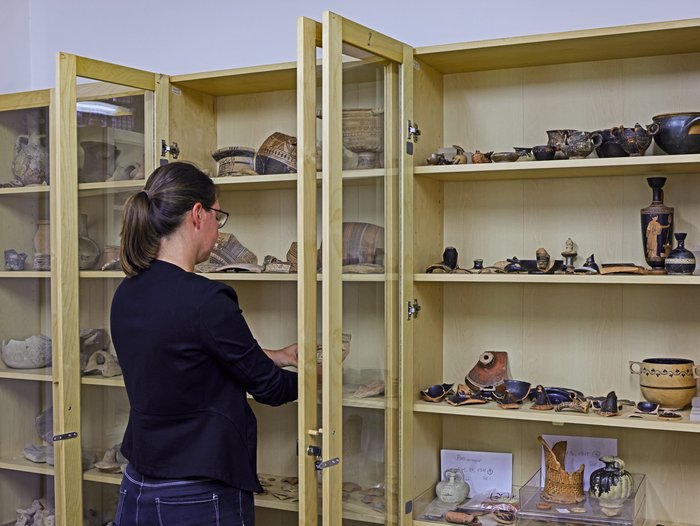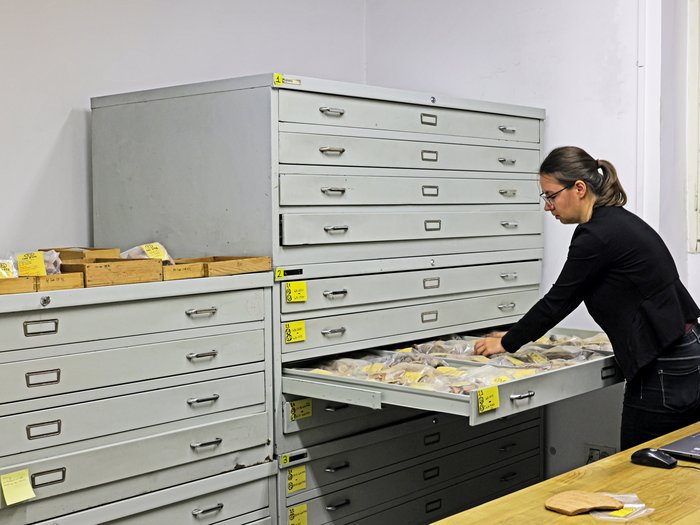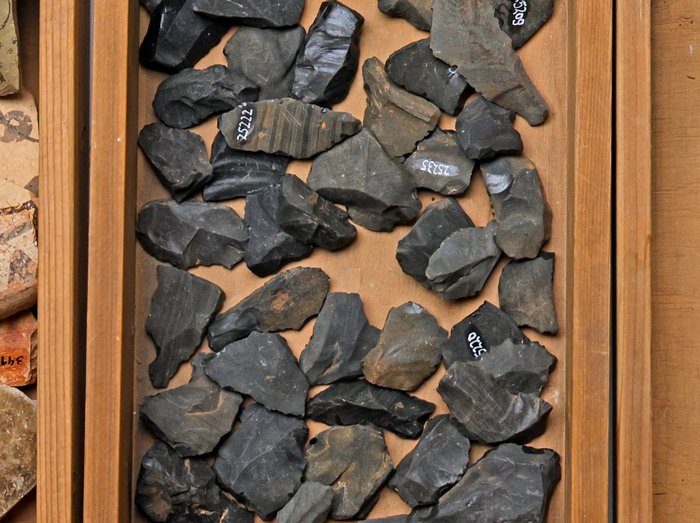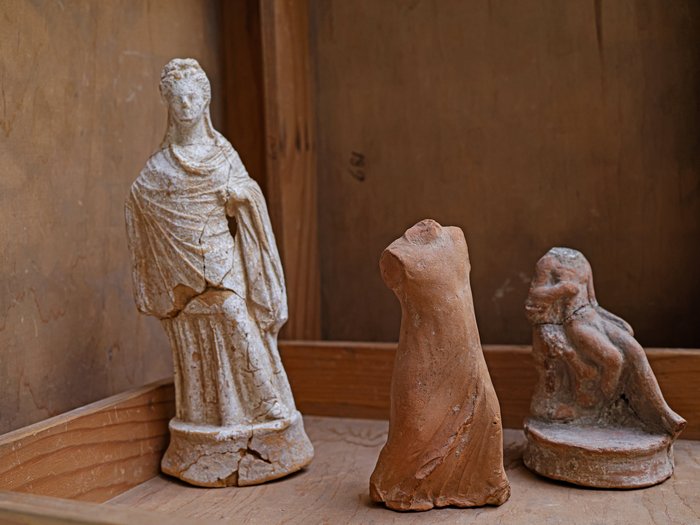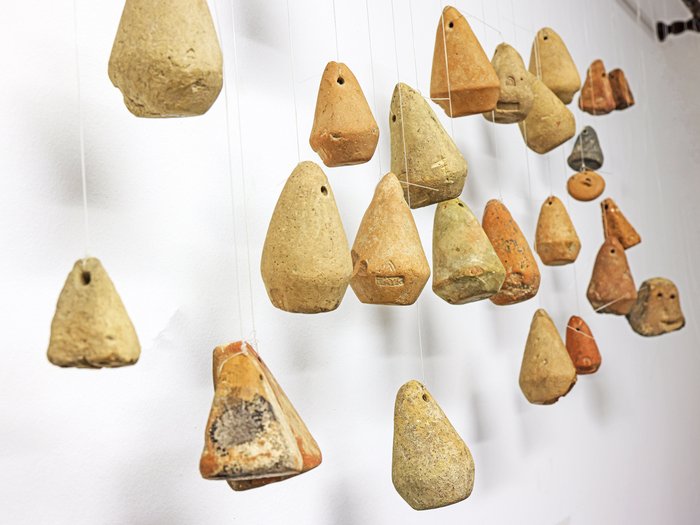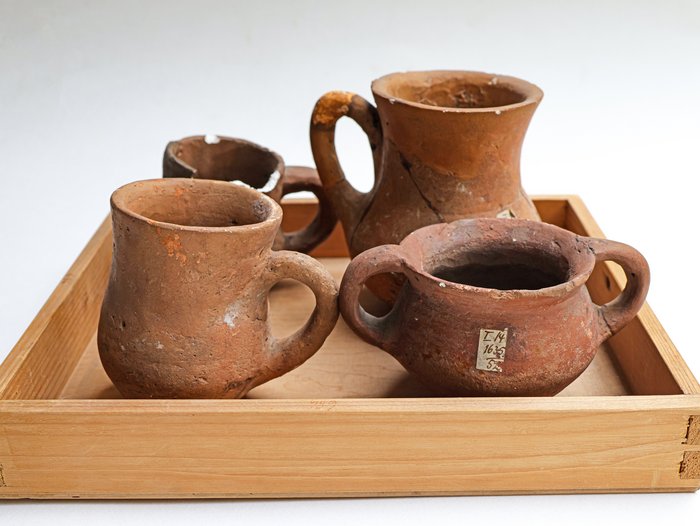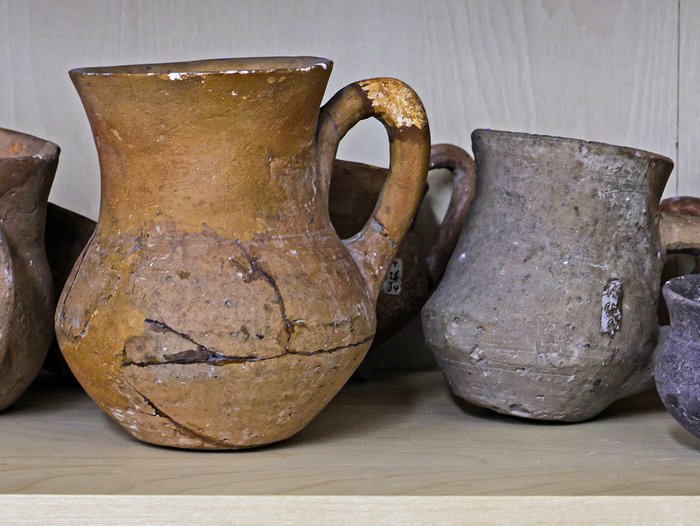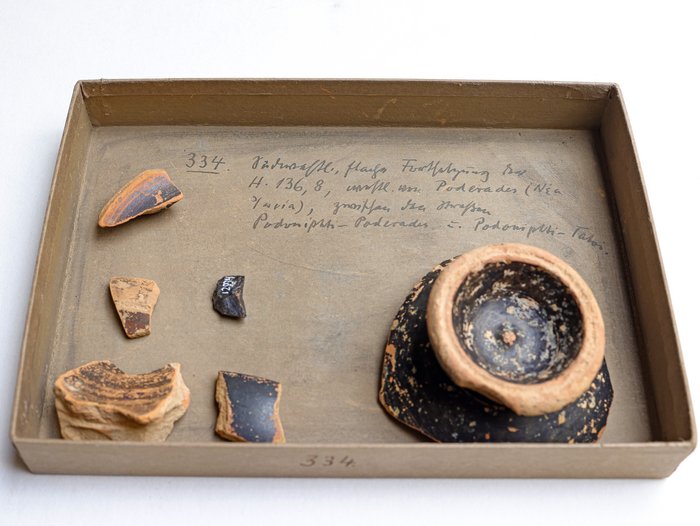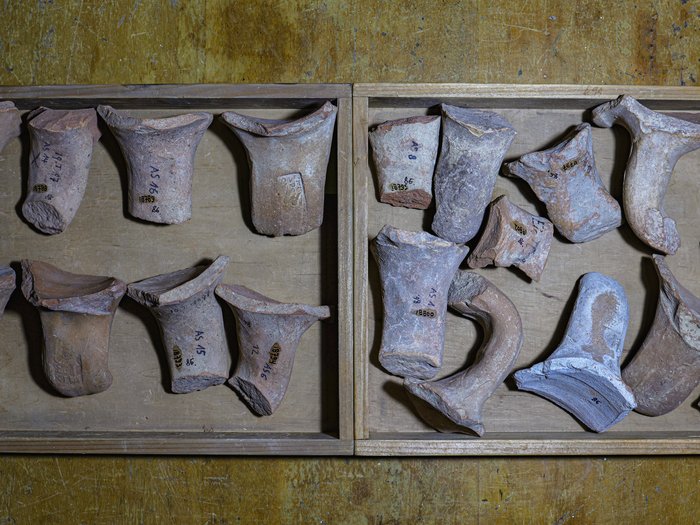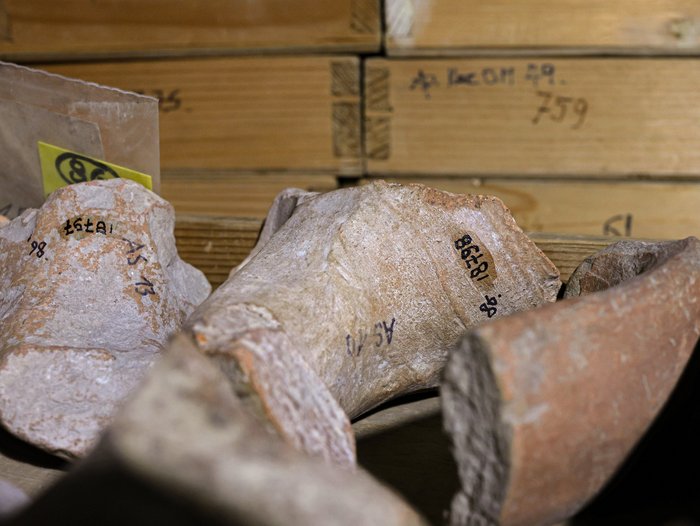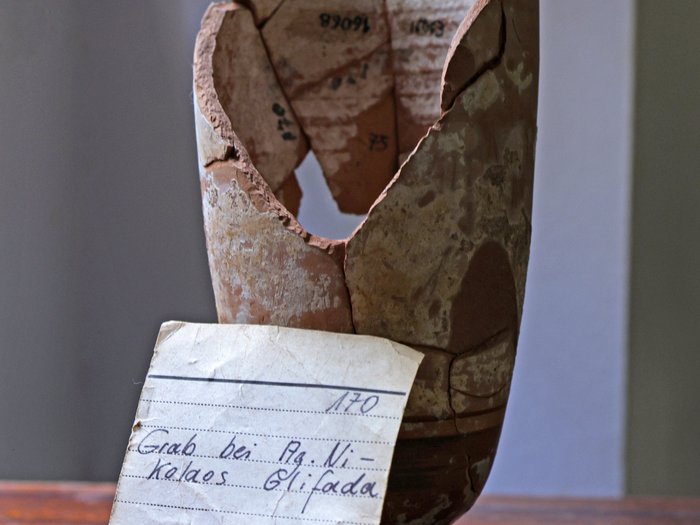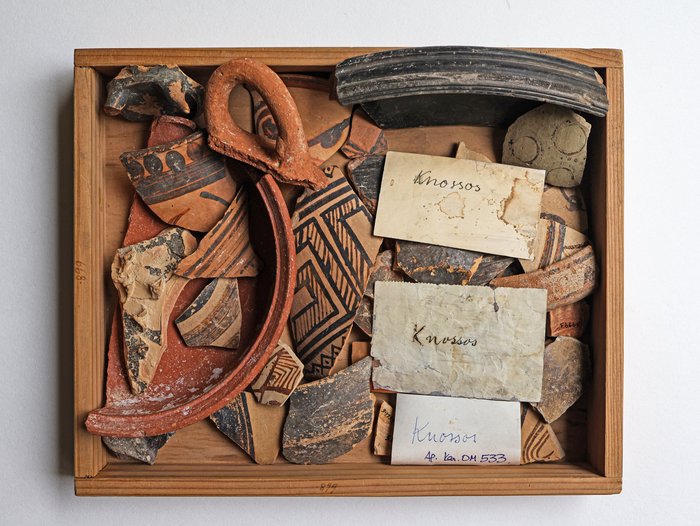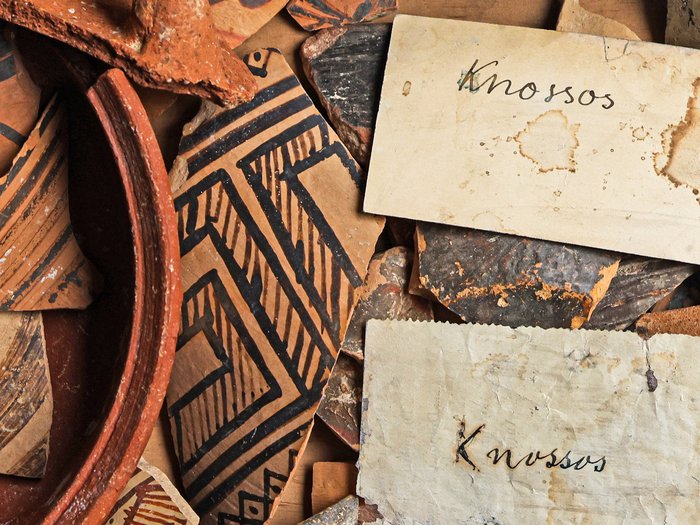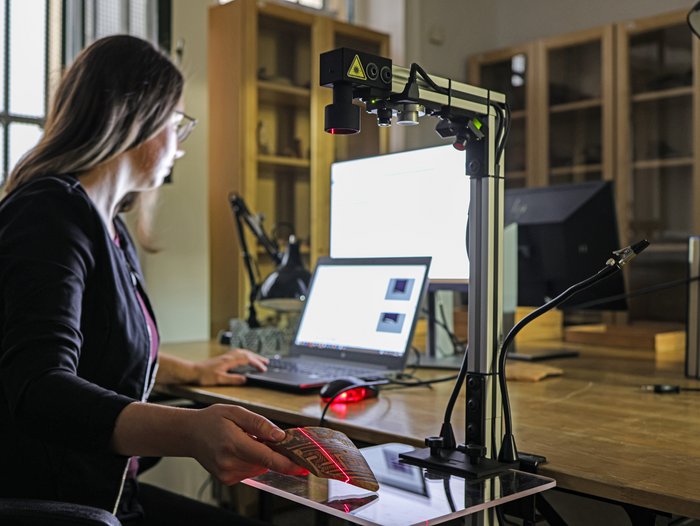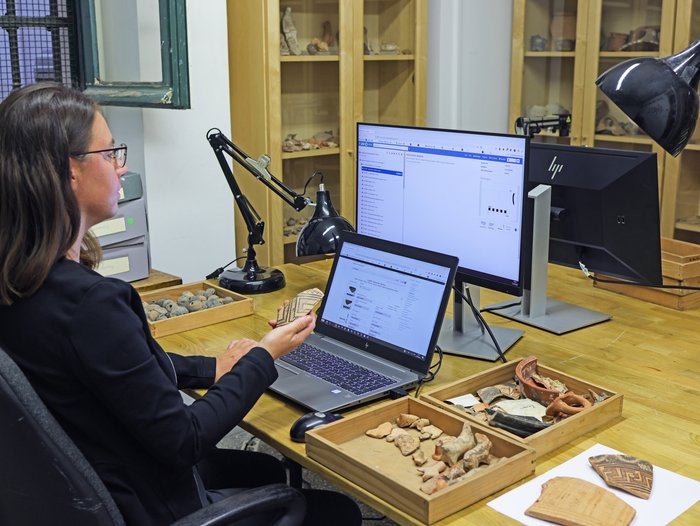
The Archaeological Collection
Profile
The Athens Department holds an archaeological collection of about 37,000 objects. By far the largest group are its approximately 32,000 pottery sherds. In addition, there are around 3,000 obsidian flakes and blades and also smaller groups of miscellaneous object categories. These include fragments from wall paintings, architecture, and sculpture as well as figurative terracotta's, roof terracotta's, spindle whorls, loom weights, and coins.
Virtually all finds originate from today's Greek territory. The collection's geographical focus is devoted to Attica, the Argolis, and Boeotia. Some islands too are well-represented. Particularly noteworthy are the collections from Paros, Thira, and Lefkada. Some smaller ones originate from other Greek regions as well as areas outside the country. For instance, the collection also comprises a group of almost completely preserved vessels recovered during Schliemann's excavations at Troy, which have been bestowed by the Berliner Museen as a permanent loan to the DAI Athens Department.
The collection comprises objects from all periods between the Neolithic and the time of Ottoman rule. Particularly numerous are the artefacts dating to the Early-, Middle-, and Late Bronze Age from the 3rd and 2nd millennia BC.
The vast majority of the collection's items are surface finds gathered during the department's site inspection campaigns. In the early phase before WWI, Habbo Gerhard Lolling and Paul Wolters were particularly active with this type of activity. Most of the finds entered the collection in the period between the world wars. The collection was significantly increased, in particular by Walther Wrede who surveyed in Attica and the Argolis between 1921 and 1944. Larger quantities of finds are likewise surface collections gathered and added to the collection in the 1930s by Kurt Gebauer and Siegfried Lauffer. Gebauer was active in the Argolis and Corinthia, Lauffer in Boeotia.
The number of objects entering the collection then drastically decreased after WWII. These include potsherds formerly in the possession of archaeologists that were handed over to the collection after their passing.
Since the 1970s, a number of find groups have been published in the Athenische Mitteilungen, so that today it is possible to get an impression of the collection's contents.
Address & Contact
Fidiou 1
10678 Athens
Greece
Opening Hours
Terms of Use
Ausgewählte Terrakotten © DAI // Nikos Chrisikakis

Publications About The Collection
Since the 1970s, several articles on the collection's holdings have been published in the Athener Mitteilungen.
F. Brommer, Antiken des Athener Instituts, AM 87, 1972, 255−294
F. Brommer, Antiken des Athener Instituts II, AM 90, 1975, 163–188
D. Grigoropoulos, Kaiserzeitliche und spätantike Keramik aus Attika in der Sammlung des Deutschen Archäologischen Instituts Athen, AM 124, 2009, 403–494
M. Georgiadis, Neolithic Pottery from the DAI Collection: Attica, AM 125, 2010, 1–43
S. Killen, Barren, Marktgewichte, Netzbeschwerer oder Webgewichte?: Bleierne Pyramidenstümpfe in der Sammlung des Athener Instituts, AM 125, 2010, 243–255
A. Alexandridou, The Attic Black-Figured Pottery of the Collection of the German Archaeological Institute at Athens, AM 126, 2011, 63–110
D. Grigoropoulos, Kaiserzeitliche und spätantike Keramik in der Sammlung des Deutschen Archäologischen Instituts Athen, AM 126, 2011, 177–244
M. Georgiadis, Neolithic Pottery from the DAI Collection: Boiotia, AM 129/130, 2014/2015, 1−36
K. Sporn - F. Ruppenstein - J. Ritter - A. Skolik, Athen, Griechenland. »Shapes of Ancient Greece« : Ein Projekt zur Digitalisierung der archäologischen Sammlung der Abteilung Athen. Der Beginn der Arbeiten 2021, e-Forschungsberichte 2 (2021) 2198–7734
Arbeiten mit dem Laser Aided Profiler (LAP) © DAI // Nikos Chrisikakis

Shapes of Ancient Greece
As part of the project Shapes of Ancient Greece (SAG), the collection is currently undergoing a digital recording programme as well as a topographical recontextualisation, so that all collection items will soon be accessible online as digital images in the central database of iDAI.objects arachne.

